(The Universe)
(The Universe)
(Earth in space/
Day/night/seasons)
(Lunar cycle/tides)
separation issues'"
(Tectonic plates/continental drift)
(Atmosphere/weather)
(Miscellaneous charts/maps/graphs)
This force is what holds the planets in orbit around the stars, and the moons around the planets.
Gravity
The ______ of the Earth gives us the day/night cycle.
The lunar phases are named based on how much of the moon's surface is ________.
Illuminated (lit up)
Name the 3 types of plate boundaries, and describe their motion:
Convergent: Colliding together
Divergent: Spreading apart
Transform: Sliding past each other
What type of weather front does the following symbol represent? Which direction is it moving in?

A warm front.
Down/to the right (southeast)
Use the weather map below to answer the question:
According to the weather map, what change most recently occurred in the weather in Texas?
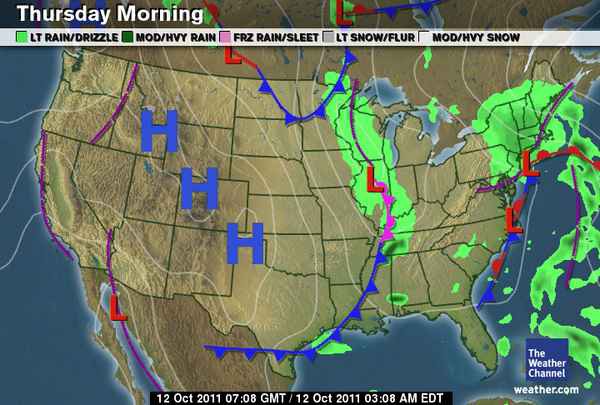
Temperatures got cooler (possibly had a storm)
The only things in the universe that are capable of producing light are _______.
Stars
It takes the Earth _______ days to orbit the Sun one time.
3651/4
Name this lunar phases:
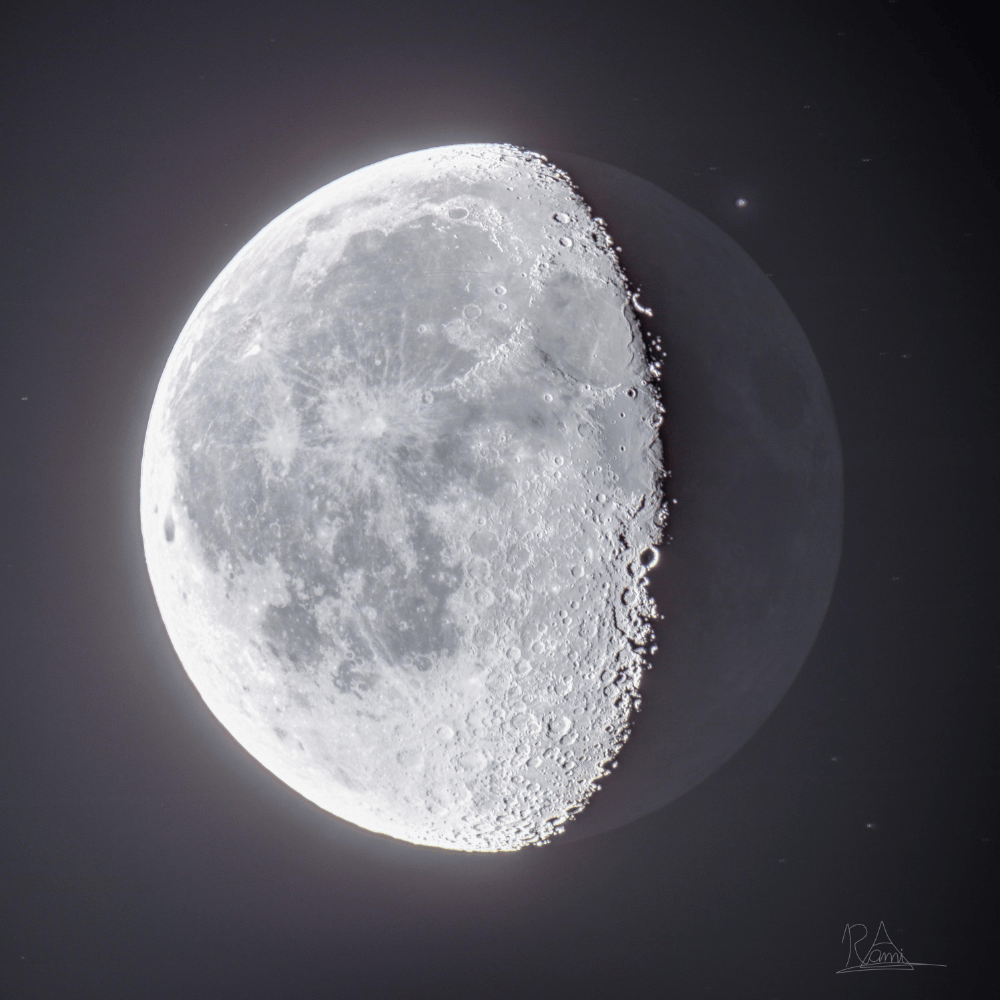
Waning Gibbous
What kind of features do you see around transform boundaries?
Earthquakes and fault lines.
The energy that generates wind comes from what source?
The Sun
A topographic map of a region is provided.
Which position indicated by the letters is at an elevation of 480 meters?
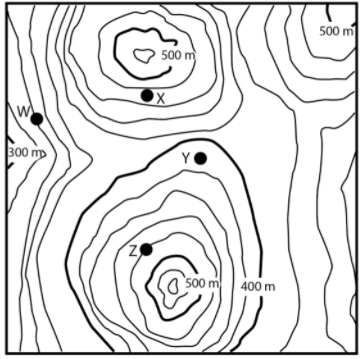
Z
Order the following parts from largest to smallest:
Planet, Star, Galaxy, Universe, Moon, Nebulae, Solar System.
Universe -> Galaxy -> Nebulae ->Solar system -> Star -> Planet -> Moon
What angle is the Earth's axis tilted at, and what is the northern hemisphere always tilted towards?
23.5 degrees, toward Polaris (the north star)
How many days does it take to go from one lunar phase to the next?
About 3.5 days
Explain what convection currents are, and how they move the tectonic plates:
Convection currents are the circular flow of a fluid that is getting heated unevenly. The magma in the asthenosphere is hotter closer to the core than nearer the lithosphere, so it is constantly rising pushing up at the divergent boundaries, then cooling and sinking again at subduction zones.
Based on the weather map below, which city will most likely experience decreasing temperature during the next 24 hours?
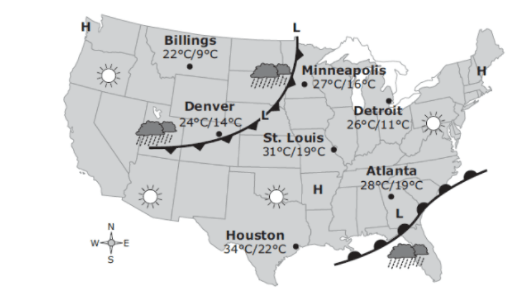
Minneapolis
Use the EM spectrum chart below to answer the question:
If a scientist was looking for a celestial object that he knew could only be detected using a telescope at a wavelength of just a little bit smaller than 1nm (one nanometer) which type of EM wave would he need to use?

X-ray wave
What are the 3 types of galaxies? What type is our milky way galaxy?
Spiral, elliptical, and irregular.
Spiral.
In the model below, which season would the southern hemisphere be in at position "2"? What season would the northern hemisphere be in at position "3"?
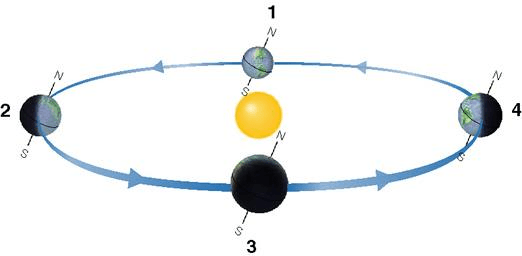
Winter. Fall.
Name the phase that comes 21 days after this phase:
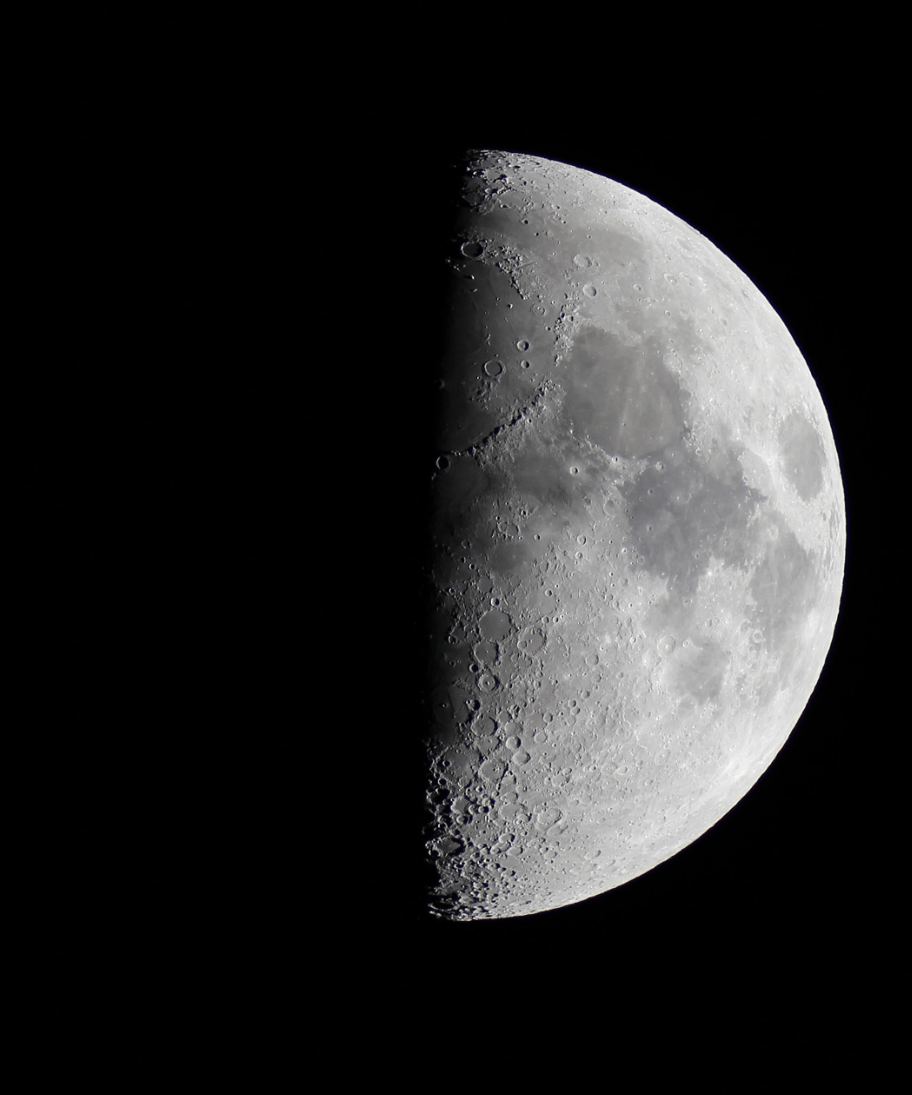
New moon
What is subduction and how does it create volcanoes?
When 2 plates collide, the more dense plate will go underneath the less dense one (subduction), eventually that plate will melt, become magma again, and will rise quickly to form volcanoes either underwater or on land. The volcanoes get taller with every eruption.
Why do hurricanes almost exclusively form near the equator and not the poles?
hurricanes are formed when warm air is rising suddenly to meet cool air that is dropping suddenly. The warm water near the equator makes the air above the ocean rise suddenly. The water/air near the poles never gets warm enough.
Use the HR diagram provided to answer the following question:
Name a star that is much less less bright than the Sun, that also has a temperature of around 10,000 K.

Sirius B
What is a light-year?
The distance that light can travel in 1 year
(9.7 trillion kilometers)
Using the model below, explain how long the days & nights would be in the northern hemisphere at each of the positions.
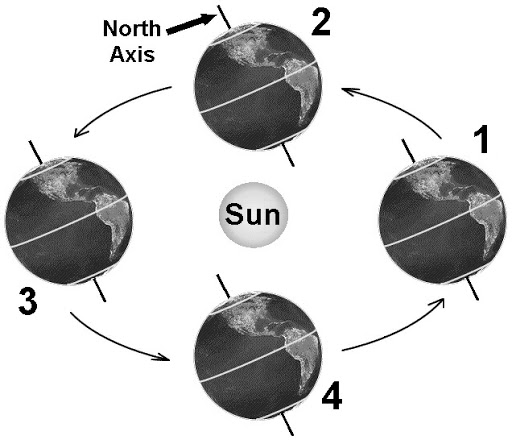
Position 1: Longest day/shortest night
Position 2: Equal day/night
Position 3: Longest night/shortest day
Position 4: Equal day/night
Werewolves only change form on a full moon. If a werewolf sees this lunar phase tonight, about how many days does it have until it changes forms again?

About 17.5 days
Name and explain the 4 types of evidence that Alfred Wegner provided to help prove his continental drift theory:
1. Geographic (puzzle pieces)
2. Geologic (mountain layers)
3. Fossil (plant & animal)
4. Climate (glacial)
The picture below models how a sea breeze if formed. Explain in detail how/why sea breezes are formed.

Since the air above land will heat quicker than the air over the ocean, the land will suddenly have low pressure warm air rising, and the cooler high pressure air over the ocean will quickly fill in to take its place. The cool air flowing towards the land is felt as a cool "sea breeze" during the day.
The following is a portion of a topographic map depicting a river running through a specific region.
In which portion of the river will the water be flowing fastest? Explain why:
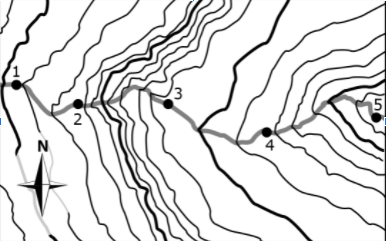
Portion 2-3. That is where the steepest drop is found according to the multiple close contour lines.